Cryo-tomography of intact, vitrified cells provides a three dimensional view of their structure and organization in a snapshot of the living state. Lacking heavy metal stains, tilt series images are typically produced by defocus phase contrast. Recently, a number of other methods have been introduced for 3D cryo-imaging. These include phase plate imaging, soft X-ray tomography, serial surface imaging using the focused ion beam-scanning electron microscope, and cryo-STEM tomography (CSTET). Here we explain the basis of the STEM setup and demonstrate the capabilities of CSTET to study unfixed, fully hydrated mammalian cells. Numerous cellular features are recognized in CSTET reconstructions, including membranes, vesicles, cytoskeleton, extracellular matrix, coated pits, and ribosomes. STEM signal acquisition configuration is more flexible than defocus phase contrast, and it imposes a much less severe spatial filter on the original images. Because low spatial frequency information is retained, the STEM tomographic reconstruction more faithfully represents the mass density distribution in the specimen.
Tanti auguri caro amico Sandro! Con molta stima, Italo.
1.
Introduction
The purpose of this paper is to provide a review of a few classical and some quite recent results about the validity of the weak Maximum Principle in a rather general setting involving non smooth functions satisfying fully nonlinear degenerate elliptic partial differential inequalities in the viscosity sense in an unbounded domain $ \Omega $. Since no regularity assumption will be made on $ \partial\Omega $ the classical methods based on the construction of suitable distance-like barrier functions are not viable in our framework.
Consider the set $ USC(\overline\Omega) $ of upper semicontinuous functions on $ \overline\Omega $ and a mapping
where $ \mathcal{S}^n $ is the space of $ n\times n $ symmetric matrices and $ F $ is degenerate elliptic, that is
In this context, the weak Maximum Principle for $ (F, \Omega) $ is the validity of the following sign propagation property:
implies
The partial differential inequality above involving in a nonlinear way the gradient and the Hessian matrix of $ u $ will be always understood in the Crandall-Ishii-Lions viscosity sense, see [15]. The motivation for considering non-smooth functions is of course a strong one when dealing with fully nonlinear partial differential inequalities or equations but is also a relevant one in the linear case, as pointed out by E. Calabi in his 1958 paper [10] on entire solutions of some elliptic partial differential inequalities. In that paper, brought to my attention by N. Garofalo, some version of the Hopf Maximum Principle is indeed proved to hold for upper semicontinuous functions $ u $ satisfying the linear partial differential inequality
in an appropriately defined weak sense.
It is worth to note from an historical point of view that the weak notion introduced by Calabi is in fact similar although somehow stronger than the Crandall-Lions viscosity notion, see [17] for comments in this respect.
In Section 2 I recall a few results concerning Alexandrov-Bakelman-Pucci estimate, in short ${\bf(ABP)}$, and as a by-product the weak Maximum Principle in the uniformly elliptic case for possibly unbounded domains satisfying a measure-type condition. Section 3 reviews more recent results concerning a class of directionally degenerate elliptic operators in domains satisfying geometric conditions related to the directions of ellipticity. Section 4 is the announcement of a recently obtained result in collaboration with A. Vitolo concerning the weak Maximum Principle in the case of cooperative systems.
Due to the expository character of the paper the proofs of the reviewed results are just sketched; for full details we refer the interested reader to the original papers [11,12,13,14].
2.
${\bf(ABP)}$ and the weak Maximum Principle: the uniformly elliptic case
It is well-known that the weak Maximum Principle may not hold in unbounded domains: just observe that
with $ n\geq 3 $ satisfies $ \Delta u = 0 $ in the exterior domain $ \Omega = {\mathbb R}^n\setminus \overline {B_1(0)} $, $ u\equiv 0 $ on $ \partial \Omega $ but $ u > 0 $ in $ \Omega $.
Some remarkable results concerning the validity of ${\bf(ABP)}$ estimates and the weak Maximum Principle for linear uniformly elliptic operators in unbounded domains are due to X. Cabré [7]. He considered domains satisfying the following measure-geometric condition:
${\bf(G)}$ for fixed numbers $ \sigma, \tau \in (0, 1) $, there exists a positive real number $ R(\Omega) $ such that for any $ y\in \Omega $ there exists an n-dimensional ball $ B_{R_{y}} $ of radius $ R_y\leq R(\Omega) $ satisfying
where $ \Omega_{y, \tau} $ is the connected component of $ \Omega\cap B_{R_{y/\tau}} $ containing $ y $.
The above measure-type condition introduced in [3] requires, roughly speaking, that there is enough boundary near every point in $ \Omega $ allowing, so to speak, to carry over the information on the sign of $ u $ from the boundary to the interior of the domain.
Note that ${\bf(G)}$ holds in particular in the following cases:
● $ \Omega $ is bounded: $ R(\Omega) = C(n) {\rm diam}(\Omega) $
● $ \Omega $ is unbounded with finite Lebesgue measure: $ R(\Omega) = C(n) |\Omega|^{\frac{1}{n}} $
● $ \Omega $ is a cylinder with $ {\rm diam} (\Omega) = |\Omega| = +\infty $ such as $ \{x = (x_1, x'): a < x_1 < b\} $ : $ R(\Omega) = b-a $
Since ${\bf(G)}$ implies the metric condition $ \sup_{\Omega} {\rm dist}(y, \partial \Omega) < +\infty $, ${\bf(G)}$ does not hold on cones. Note also that the periodically perforated plane
as well as its $ n- $dimensional analogues or variants are ${\bf(G)}$ domains while of course this is not the case for exterior domains such as $ {\mathbb R}^n\setminus \overline {B_{r}(0)} $.
For domains satisfying condition ${\bf(G)}$, X.Cabré [7] proved an Alexandrov-Bakelman-Pucci estimate for strong solutions:
Theorem 2.1. Let $ \Omega $ satisfy ${\bf(G)}$, $ f\in L^n(\Omega) $ and $ c\leq 0 $. If $ u\in W^{2, n}(\Omega) $ satisfies almost everywhere the uniformly elliptic partial differential inequality
with
then
If $ f\equiv 0 $ and $ u\leq 0 $ on $ \partial \Omega $, the validity of weak Maximum Principle follows from (2.1) in the case of linear uniformly elliptic operators. Observe also that (2.1) extends to the case of ${\bf(G)}$ domains the classical ${\bf(ABP)}$ estimate for bounded domains, see [16].
Some of the results of [7] have been later generalised in two directions in the paper [11]:
● viscosity solutions of fully nonlinear uniformly elliptic inequalities
● more general domains satisfying a weaker form of ${\bf(G)}$
The above mentioned condition, which differs from ${\bf(G)}$ since does not require a priori the boundedness of the radii $ R_y $ reads as
${\bf(wG)}$ there exist constants $ \sigma, \tau \in(0, 1) $ such that for all $ y \in \Omega $ there is a ball $ B_{R_y} $ of radius $ R_y $ containing $ y $ such that
where $ \Omega_{y, \tau} $ is the connected component of $ \Omega \cap B_{R_y/\tau} $ containing $ y $.
If $ \sup_{y\in\Omega}R_y < +\infty\, $, then ${\bf(wG)}$ boils down to condition ${\bf(G)}$. Relevant examples of unbounded domains satisfying condition ${\bf(wG)}$ but not ${\bf(G)}$ are cones of $ {\mathbb R}^n $ and their unbounded subsets. Indeed, condition ${\bf(wG)}$ is satisfied in this case of cones with $ R_y = O(|y|) $ as $ |y|\to \infty $.
A less standard example which shows that there is no a priori restriction on the growth at infinity of $ R_y $ is the plane domain described in polar coordinates as
Here ${\bf(wG)}$ holds with $ R_y = O\left({\rm e}^{|y|}\right) $ as $ |y|\to \infty $.
In order to state the main result in [11] concerning a nonlinear version of the Alexandrov-Bakelman-Pucci we assume that the structure conditions ${\bf(SC)}$ hold:
● $ F $ is continuous with respect to all variables $ x, t, p, X $
● uniform ellipticity: $ \lambda\, {\rm Tr}\, (Q)\leq F(x, t, p, X+Q)-F(x, t, p, X)\leq \Lambda \, {\rm Tr}\, (Q) $
for all $ Q $ positive semidefinite and some $ 0 < \lambda\leq \Lambda $
● properness: $ t\mapsto F(x, t, p, X) $ is nonincreasing
● linear growth with respect to the gradient $ F(x, 0, p, O)\leq \beta(x)\, |p| \, $ for some bounded $ \beta $
Under the assumptions above we proved the following form of the ${\bf(ABP)}$ estimate for bounded above viscosity subsolutions:
Theorem 2.2. Let $ u\in USC(\overline\Omega) $ with $ \sup_{\Omega}u < +\infty $ satisfy in the viscosity sense
where $ f\in C(\Omega)\cap L^\infty(\Omega) $. If $ \Omega $ satisfies ${\bf(wG)}$ for some $ \sigma, \tau \in (0, 1) $, $ F $ satisfies ${\bf(SC)}$ and, moreover,
then
for some positive constant $ C $ depending on $ n, \ \lambda, \ \Lambda, \sigma, \tau $ and $ \sup_{y\in \Omega} R_y\, \Vert \beta \Vert _{L^\infty (\Omega_{y, \tau})}\, . $
For $ u\leq 0 $ on $ \partial\Omega $ and $ f\geq 0 $ the above yields the weak Maximum Principle.
To obtain the ${\bf(ABP)}$ estimate in this more general case we will assume, besides condition ${\bf(wG)}$ on the domain, the extra condition (C) which can be seen as a control of the interplay between the geometrical size of the domain (the opening, in the case of cones) and the growth of the first order transport term.
This condition is trivially satisfied if $ \sup_{y\in\Omega} R_y\leq R_0 < +\infty $ in ${\bf(wG)}$, i.e., if $ \Omega $ satisfies ${\bf(G)}$ or, for example, when $ b\equiv 0 $, namely when $ F $ does not depend on the first order transport term. Let us observe also that condition (C) is unavoidable in general, as shown by by the next
Example 2.3. The function $ u(x) = u(x_1, x_2) = \left(1-{\rm e}^{1-x_1^\alpha}\right)\, \left(1-{\rm e}^{1-x_2^\alpha}\right)\, , $ with $ 0 < \alpha < 1 $, is bounded and strictly positive in the cone $ \Omega = \left\{x = (x_1, x_2)\in {\mathbb R}^2\, :\ x_1 > 1, \ x_2 > 1\right\} $ and satisfies
where the vectorfield $ b $ is given by $ b(x, y) = \left(\frac{\alpha}{x_1^{1-\alpha}}+\frac{1-\alpha}{x_1}\; , \; \frac{\alpha}{x_2^{1-\alpha}}+\frac{1-\alpha}{x_2}\right)\, $.
As observed above, $ \Omega $ satisfies ${\bf(wG)}$ with $ R_z = O(|z|) $ as $ |z|\to \infty $. Since $ ||b||_{L^\infty (\Omega_{z, \tau})} = 1 $ the interplay condition (C) fails in this example.
Some non trivial cases in which condition (C) is fulfilled are:
(a) the cylinder $ \Omega = \left\{x = (x', x_n)\in {\mathbb R}^{n-1}\times {\mathbb R}\; :\; |x'| < 1\, , \ x_n > 0\right\} $ is a (G) domain and therefore condition (C) is obviously satisfied,
(b) $ \Omega = \left\{ (x', x_n)\in {\mathbb R}^{n-1}\times {\mathbb R}\; :\; x_n > |x'|^q\right\}\, $ with $ q > 1 $, This non convex conical set is a genuine (wG) domain with radii $ R_y = O\left(|y|^{1/q}\right) $ as $ |y|\to \infty $.
In this case, (C) imposes to the function $ \beta $ a rate of decay $ \beta(y) = O\left(1/|y|^{1/q}\right) $ as $ |y|\to \infty $.
(c) $ \Omega $ is the strictly convex cone $ \left\{ x\in {\mathbb R}^n\setminus \{0\}\; :\; x/|x|\in \Gamma\right\} $ where $ \Gamma $ is a proper subset of the unit half-sphere $ S^{n-1}_+ = \left\{ x = (x', x_N)\in {\mathbb R}^{n-1}\times {\mathbb R} \; :\; |x| = 1\, , \ x_n > 0\right\} $.
In this case (wG) is satisfied with $ R_y = O(|y|) $ for $ |y|\to \infty $ and condition (C) requires the rate of decay $ \beta(y) = O\left(1/|y|\right) $ as $ |y|\to \infty $.
Note that cases (a) and (c) can be seen as limiting cases of situation (b) when, respectively, $ q\to +\infty $ and $ q = 1 $.
The proof of Theorem 2.2 is based on several viscosity calculus tools but not on the Comparison Principle for viscosity sub and supersolutions. It relies indeed on rescaled versions of the weak Harnack and of the boundary weak Harnack inequality for operators including first order terms, see [11] and [8] for the case of Pucci operators.
Let us briefly sketch the main steps of the proof with the aid of the following three lemmas. The minimal Pucci operator with parameters $ 0 < \lambda\leq \Lambda $ is defined by
where $ X^+ $ and $ X^- $ are nonnegative definite matrices such that $ X = X^+-X^- $ and $ X^+X^- = O $. Under our assumption the following holds:
Lemma 2.4. If $ w\in USC(\Omega) $ satisfies
in the viscosity sense, then for each $ M\in {\mathbb R} $ the function $ u = M-w^+ \in LSC(\Omega) $ satisfies
The proof is a direct application of the viscosity notions.
Lemma 2.5 (the rescaled weak Harnack inequality). Let $ R > 0 $, $ \tau\in(0, 1) $ and $ f\in C(B_{R/\tau})\cap L^\infty(B_{R/\tau}) $. If $ u\in LSC(\overline B_{R/\tau}), \, u\geq 0 $ is a viscosity solution of
then
where $ p $ and $ C^* $ are positive constants depending on $ \lambda, \Lambda, n, \tau $ and on the product $ R\, \|\beta\|_{L^\infty(B_{R/\tau})} $.
Inequality (2.2) is a consequence of the weak Harnack inequality for nonnegative viscosity solutions in a cube $ Q_1 $ with side-length 1
where $ \hat{p} $ and $ \hat{C} $ depend on $ \lambda, \ \Lambda, \ N $ as well as on $ \|\beta\|_{L^\infty(Q_1)} $, see [8]. Inequality (2.2) is indeed obtained from the above by rescaling and using the positive homogeneity of the operator $ {P}^-_{\lambda, \Lambda} $ and a standard covering argument.
Let $ A $ be a bounded domain in $ {\mathbb R}^n $ and $ B_R\, , B_{R/\tau} $ be concentric balls such that
For $ u \in LSC(\bar A) $, $ u\geq 0 $, consider the following lower semicontinuous extension $ u^-_m $ of function $ u $
where $ m = \inf_{x \in \partial A \cap B_{R/\tau}} u(x)\, . $
Lemma 2.6. With the above notations, if $ g \in C(A)\cap L^\infty (A) $ and $ u \in LSC(\bar A) $ satisfy
in the viscosity sense, then
where $ p $ and $ C^* $ are positive constants depending on $ \lambda, \Lambda, n, \tau $ and on the product $ R\, \|\beta\|_{L^\infty(B_{R/\tau})} $.
It is not hard to check, see [8] for the case $ b\equiv 0 $, that $ u^-_m $ is a viscosity solution of
where $ \chi_{A} $ is the characteristic function of $ A $. The statement follows then by applying the weak Harnack inequality (2.2) to $ u^-_m\, $, observing that $ \inf _{B_{R}} u^-_m\leq \inf _{A \cap B_{R}} u $ and that $ \chi_A\, g^+\equiv 0 $ outside $ A $.
The role of Lemma 2.6 in the proof of Theorem 2.2 is a crucial one, in connection with the ${\bf(wG)}$ condition, in establishing a localized form of the ${\bf(ABP)}$ estimate. Indeed, if $ w\in USC(\Omega) $ satisfies $ F(x, w, Dw, D^2w)\geq f $ then, as we have seen above, for $ u(x) = \sup_{\Omega}w^+-w(x)\geq 0 $ we have
Apply now Lemma 2.6 with $ A = \Omega_{y, \tau} $ and $ g = f^- $ to obtain
for positive constants $ p $ and $ C^*_y $ depending on $ N, \ \lambda, \ \Lambda, \ \tau $ and $ R_y\, \Vert b\Vert _{L^\infty (\Omega_{y, \tau})} $.
The left-hand side of the above inequality can be of course estimated from below as follows
where $ m = \inf_{x \in \partial \Omega_{y, \tau} \cap B_{R/\tau}} u(x)\, . $ Hence, using condition ${\bf(wG)}$,
At this point a few technicalities lead to estimate the value of $ w^+ $ at any $ y\in \Omega $ as follows:
for suitable choice of $ \theta_y \in(0, 1) $ depending on $ n, \ \lambda, \ \Lambda, \ \sigma, \ \tau $ and on $ y $ through the quantity $ R_y\, \Vert b\Vert _{L^\infty (\Omega_{y, \tau})} $ which appears in the statement of Theorem 2.2. The proof of the theorem is easily deduced from (2.3) through the use of condition (C).
3.
Degenerate ellipticity
This section is about the validity of the weak Maximum Principle for degenerate elliptic operators $ F $ which are strictly elliptic on unbounded domains $ \Omega $ of $ \mathbb R^n $ whose geometry is related to the direction of ellipticity. Some results of that kind for one-directional elliptic operators in bounded domains have been previously established, among other qualitative properties, by Caffarelli-Li-Nirenberg [9].
We assume:
the following standard monotonicity conditions on $ F $
and, just for simplicity,
where $ O $ is the null matrix. Our last requirement is on a Lipschitz behavior of $ F $ with respect to the gradient variable,
The class of domains that will be considered in this section is conveniently described by decomposing $ {\mathbb R}^n $ as $ \mathbb R^n = U\bigoplus U^\bot $, where $ U $ is a $ k $-dimensional subspace and $ U^\bot $ is its orthogonal complement and denoting by $ P $ and $ P^\bot $ the projection matrices on $ U $ and $ U^\bot $, respectively.
We will consider the open domains $ \Omega $ which are contained in unbounded slabs whose $ k $-dimensional sections are cube of edge $ d $, namely
where $ \{\nu^1, \dots, \nu^k\} $ is an orthonormal system for the subspace $ U $. We will refer to vectors in $ U^\bot $ as unbounded directions.
Such domains may of course be unbounded and of infinite Lebesgue measure but they do satisfy the measure-geometric (wG) condition of the previous section. Note once more that no regularity requirement is made on $ \partial \Omega $.
3.1. Directional ellipticity and control in the unbounded directions
The next assumptions are crucial ones in establishing our results on the weak maximum and on Phragmèn-Lindelöf principles
for all $ t > 0 $.
Observe that the matrix $ \nu \otimes \nu $ is the orthogonal projection over the one dimensional subspace generated by $ \nu $: the strict directional ellipticity condition (3.7) related to the geometry of $ \Omega $ will play a crucial role in our results.
for all $ t > 0 $, as $ |x|\to \infty $.
The above one-sided Lipschitz condition is satisfied in the linear case if the coefficients corresponding to second derivatives in the unbounded directions (i.e., belonging to $ U^\bot $) have at most linear growth with respect to $ x $. It is worth to observe that $ \nu \otimes \nu $ and $ P^\bot $ are symmetric and positive semidefinite matrices and that (3.7), (3.8) form a much weaker condition than uniform ellipticity. Indeed, they comprise a control from below only with respect to a single direction $ \nu\in U $ together with control from above in the directions of $ U^\bot $, a much weaker condition on $ F $ than uniform ellipticity which would indeed require a uniform control of the difference quotients both from below and from above with respect to all possible increments with positive semidefinite matrices.
We will refer collectively to conditions (3.1) to (3.8) above as $ (\bf {SC}) $.
3.2. A few examples
The following very basic two dimensional example is useful to clarify our structural assumptions. Let $ U = \{x = (x_1, x_2): x_2 = 0\} $ and consider the linear operator
where $ H $, $ c $ are continuous and bounded with respect to $ x $. Obviously, $ F $ satisfies (3.1), (3.2), (3.4) and (3.3) if $ c(x)\leq 0 $ and $ H(x, 0) = 0 $. The strict ellipticity condition (3.7) is trivially satisfied by $ \nu = (1, 0) $ and $ \lambda = 1 $. Condition (3.7) is fulfilled with $ \Lambda = 1 $ since
and $ P^\bot $ is the matrix
Condition (3.5) is trivially satisfied if $ H $ is Lipschitz continuous.
Operators of this kind arise in the dynamic programming approach to the optimal control of a deterministic system in $ {\mathbb R}^n $ which is perturbed by a lower dimensional Brownian motion. A more general example is
with
The structure condition (3.7) requires in this case a sublinear growth of the coefficient $ \varphi $ in the unbounded directions of the domain.
The Bellman-Isaacs operators are an important class of fully nonlinear operators arising in the theory of differential games. They have the following form
with constant coefficients depending $ \alpha $ and $ \beta $ running in some sets of indexes $ \mathcal{A} $, $ \mathcal {B} $.
It is not hard to check that condition $ (\bf{SC}) $ is satisfied in any domain $ \Omega $ contained in a $ (n-k) $-infinite slab as in (3.6) if all matrices $ A^{\alpha\beta} $, whose entries are denoted by $ a_{ij}^{\alpha\beta}(x) $, are positive semidefinite and
where $ \lambda, \Lambda, \gamma $ are independent on $ \alpha, \beta $ and $ \{\nu^1, \dots, \nu^k\} $ is an orthonormal basis of $ U $.
3.3. Directional ellipticity and the weak Maximum in special domains
The main results concerning the validity of (wMP) are stated in the following theorems:
Theorem 3.1. Let $ \Omega $ be a domain of $ \mathbb R^n $ satisfying condition (3.6):
and assume that $ F $ satisfies the structure condition $ (\bf SC) $.
Then (wMP) holds for any $ u \in USC(\overline\Omega) $ such that $ u^+(x) = o(|x|) $ as $ |x| \to \infty $.
Note that some restriction on the behaviour of $ u $ at infinity is unavoidable. Observe indeed that $ u(x_1, x_2, x_3) = e^{x_1}\sin x_2\sin x_3 $ solves the degenerate Dirichlet problem
in the $ 1 $-infinite cylinder $ \Omega = \mathbb R\times (0, \pi)^2\subset \mathbb R^3 $ and $ u(x_1, x_2, x_3) > 0 $ in $ \Omega $ so (wMP) fails in this case.
As a consequence of the previous Theorem a quantitative estimate can be obtained:
Theorem 3.2. Let $ \Omega $ be a domain of $ \mathbb R^n $ satisfying condition (3.6) and assume that $ F $ satisfies the structure condition $ (\bf SC) $.
If
where $ f $ is continuous and bounded from below and $ u^+(x) = o(|x|) $ as $ |x| \to \infty $, then
where $ d = \min _h d_h $ and $ f^-(x) = -\min(f(x), 0) $.
The method of proof of the above theorems is considerably different from that of the analogous results in Section 2 since tools as Harnack inequalities are not available in the present degenerate elliptic setting.
In order to simplify the notations a sketch of the proof of Theorem 3.1 is given below for the case $ F = F(x, \nabla^2u)+ c(x)u $ where $ c\leq 0 $ and $ \Omega = \{x\in {\mathbb R}^2: -d/2 < x_1 < d/2\} $. So we take $ \nu = (1, 0) $ and the projection matrix on $ U $ is
Arguing by contradiction we suppose that $ u(x^0) = k > 0 $ at some $ x^0 \in \Omega $.
Let us consider then, for $ \varepsilon > 0 $, the function $ u^\varepsilon(x) = u(x)-\varepsilon \phi(x) $ where $ \phi(x) = \sqrt {x_2^2+1} $ is smooth function penalising the unbounded variable $ x_2 $. The prescribed behavior of $ u $ at infinity implies then that there exists a bounded domain $ \Omega^\varepsilon \subset \Omega $ such that $ u^\varepsilon \leq 0 $ outside $ \Omega^\varepsilon $. Hence, for $ \varepsilon < \frac{k}{2\phi(x^0)} $,
Since $ \phi $ is smooth it is easy to check that
in the viscosity sense. The next step is to construct a smooth function $ h^\varepsilon $, depending on a positive parameter $ \alpha $ to be chosen later, to be used as a test function replacing $ u^\varepsilon $ in 3.9. At this purpose, set
where $ k^\varepsilon = u^\varepsilon (x^\varepsilon) $. We have
Modulo a translation by a nonnegative constant $ \delta^\varepsilon $ we can find some point $ \overline x^\varepsilon $ such that $ h^\varepsilon+\delta^\varepsilon +\varepsilon \phi $ touches $ u^\varepsilon $ from above at $ \overline x^\varepsilon $. So, by definition of viscosity subsolution and using the assumption that the zero-order coefficient $ c $ is $ \leq 0 $ and that $ h ^\varepsilon $, $ \delta^\varepsilon $ and $ \varepsilon \phi $ are positive,
Observe now that $ \nabla^2 h^\varepsilon(\overline x^\varepsilon) = -\alpha^2 k^\varepsilon e^{\alpha(\overline x^\varepsilon_1-x^\varepsilon_1)-\alpha d}\, \nu\otimes\nu $ and apply the directional ellipticity assumption (3.7) with $ X = \nabla^2h^\varepsilon(\overline x^\varepsilon)+\varepsilon\nabla^2\phi(\overline x^\varepsilon) $ and $ t = \frac{ k}{2} e^{-2\alpha d} $ to obtain, taking (3.10) into account,
In order to let $ \varepsilon \to 0 $ in the above let us consider first the case where $ \overline x^\varepsilon $ is bounded and therefore, at least for a subsequence $ \overline x^\varepsilon \to \overline x $ as $ \varepsilon \to 0^+ $.
By continuity of $ F $ and $ \nabla^2 \phi $ we obtain thanks to (3.4) the contradiction
and the Theorem is proved in this case.
Suppose now that $ \overline x^\varepsilon $ is unbounded and observe that $ \frac{1}{\phi(x) }P^\bot \geq \nabla^2 \phi(x) $ in the matrix ordering as in (3.2) where
Hence, by degenerate ellipticity and (3.11),
Using condition (3.8) with $ t = \frac{\varepsilon}{\phi(\overline x^\varepsilon)} $ and $ X = O $ we have
Since $ \frac{|\overline x^\varepsilon|} {\phi(\overline x^\varepsilon)} $ remains bounded as $ \varepsilon \to 0 $, using the above estimate we derive the contradiction
Let us now sketch the proof of Theorem 3.2 in the setting adopted for the proof of Theorem 3.1 and assume as a further simplification that $ \Omega $ is the strip $ (0, 1)\times {\mathbb R} $. The first step is to show by simple viscosity calculus that if $ u $ satisfies $ F(x, D^2u)+c(x)u \ge f(x) $ in $ \Omega $ with $ c\leq 0 $, then $ u^+ = {\rm max}(u, 0) $ satisfies
Consider the auxiliary function
where $ C $ is a positive constant to be chosen in the sequel.
The structure condition $ (\bf SC) $ yields
Choosing $ C = \sup_{\Omega}\frac{f^-}{\lambda} $ we obtain
By Theorem 3.1 we conclude that $ w \le 0 $ in $ \Omega $, yielding
which proves the statement in this slightly simplified case. The case $ d\neq 1 $ can be dealt by working with the rescaled variable $ y = \frac{x}{d} $ since the function $ v(x) = u(dy) $ satisfies the inequality
for $ y\in d^{-1} \Omega \subset (0, 1)\times {\mathbb R} $ where $ G(y, X) = d^2 F(dx, d^{-2} X) $.
It is well-known that the weak Maximum Principle for linear uniformly elliptic operators
in bounded domains may hold by replacing the standard assumption $ c\leq 0 $ by suitable alternative conditions, see for example [3,18].
The next result which easily follow from the previous Theorem go in this direction.
Theorem 3.3. Let $ \Omega $ satisfy (3.6) and assume that $ F $ satisfies $ (\bf SC) $ with (3.3) replaced by the weaker condition
for some continuous bounded function $ c(x) > 0 $ and for all $ s > r $.
Then $ ({\bf wMP}) $ holds for $ u \in USC(\overline \Omega) $, $ u $ bounded above, provided $ \frac{1}{\lambda} \min d_h^2 \sup_{\Omega} c(x) $ is small enough.
As already observed $ F(x, u, Du, D^2u) \ge 0 $ implies $ F(x, u^+, Du^+, D^2u^+) \ge 0 $ and so, by (3.13) with $ r = 0, s = u^+ $,
Since $ u^+ = 0 $ on $ \partial \Omega $, Theorem (3.2) applies with $ f = -c\, u^+ $ leading to
where $ C\geq c(x) $. From this estimate the statement follows if $ K = \frac{e d^2 C\ }{\lambda} < 1 $.
For fixed $ C > 0 $ this results applies to narrow domains, that is those whose thickness $ d $ is sufficiently small. Conversely, for fixed $ d > 0 $ (wMP) holds provided $ C $ is a sufficiently small positive number. The estimate above shows also that (wMP) holds if the directional ellipticity constant $ \lambda $ is large.
4.
Weak Maximum Principle for some cooperative systems
In a work in progress with A.Vitolo [14] we consider systems of elliptic partial differential inequalities of the form
in a bounded domain $ \Omega\subset {\mathbb R}^n $. Here $ u = (u_1, ..., u_N) $ is a vector function $ u: {\mathbb R}^n\to {\mathbb R}^N $, $ C(x) = (c_{ij}(x)) $ is a $ N\times N $ matrix and $ F = (F_1, ..., F_N) $ are second order operators acting on $ u $ of the form
It is well-known that the validity of the weak Maximum Principle, namely the sign propagation property
may fail for general matrices $ C $. Several papers, see for example [1,5,19] for linear $ F_i $ and [6] for fully nonlinear differential operators, considered such systems in the case $ C(x) $ is a cooperative matrix, often called essentially positive, see [4], that is
in order to establish the validity of the weak Maximum Principle. The results obtained in those papers require uniform ellipticity of the operators $ F_i $.
In our work in progress we select a sufficient condition guaranteing the validity of a vector form of the weak Maximum Principle for upper semicontinuous viscosity solutions of systems (4.1), where the interaction matrix satisfies (4.2), in the more general context of operators $ F_i $ which are just degenerate elliptic, namely
for all matrix $ Q\geq O $. A basic example of such operators are Bellman operators
where $ A_i^{\gamma}(x) $ are symmetric positive semidefinite and $ \gamma $ is a parameter running in an arbitrary set $ \Gamma $.
For the proof of that result, which seems to be new even in the linear case
where $ A^i(x) $ are symmetric positive semidefinite matrices, the reader is referred to [14].
It relies on a suitable combination of results in [2] concerning the validity of the weak Maximum Principle for scalar degenerate elliptic operators with ideas in [6] and some viscosity calculus to exploit conveniently the cooperativity assumption.
Conflict of interest
The author declares no conflict of interest.











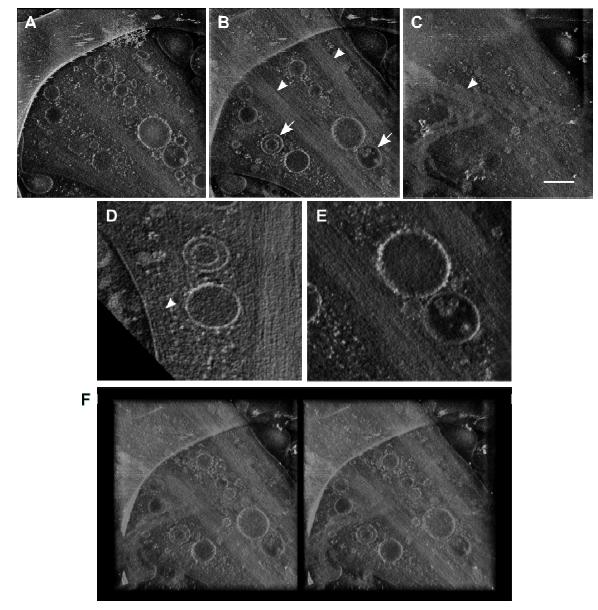
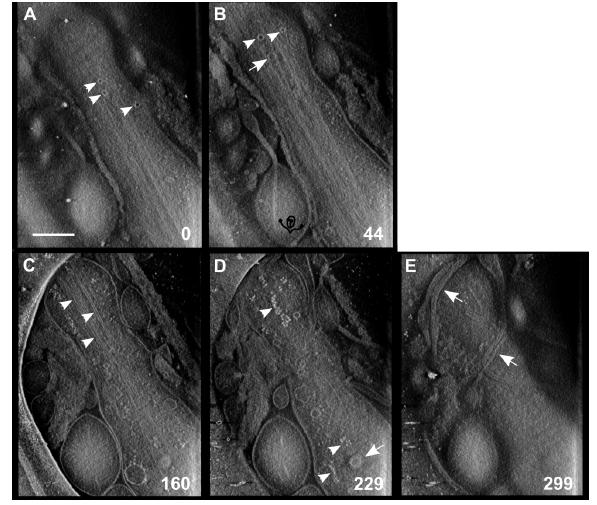
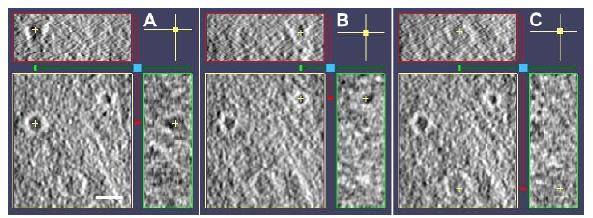
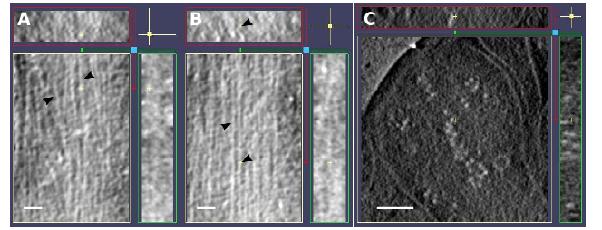
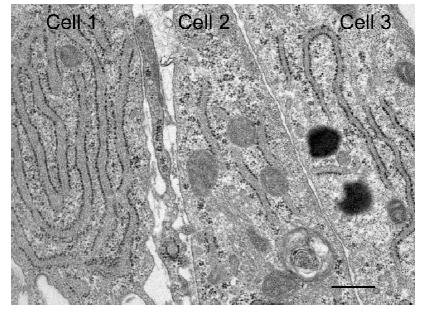
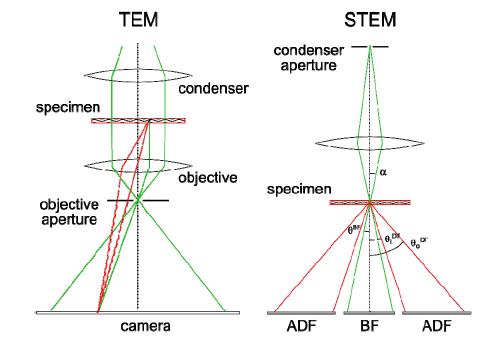


 DownLoad:
DownLoad: